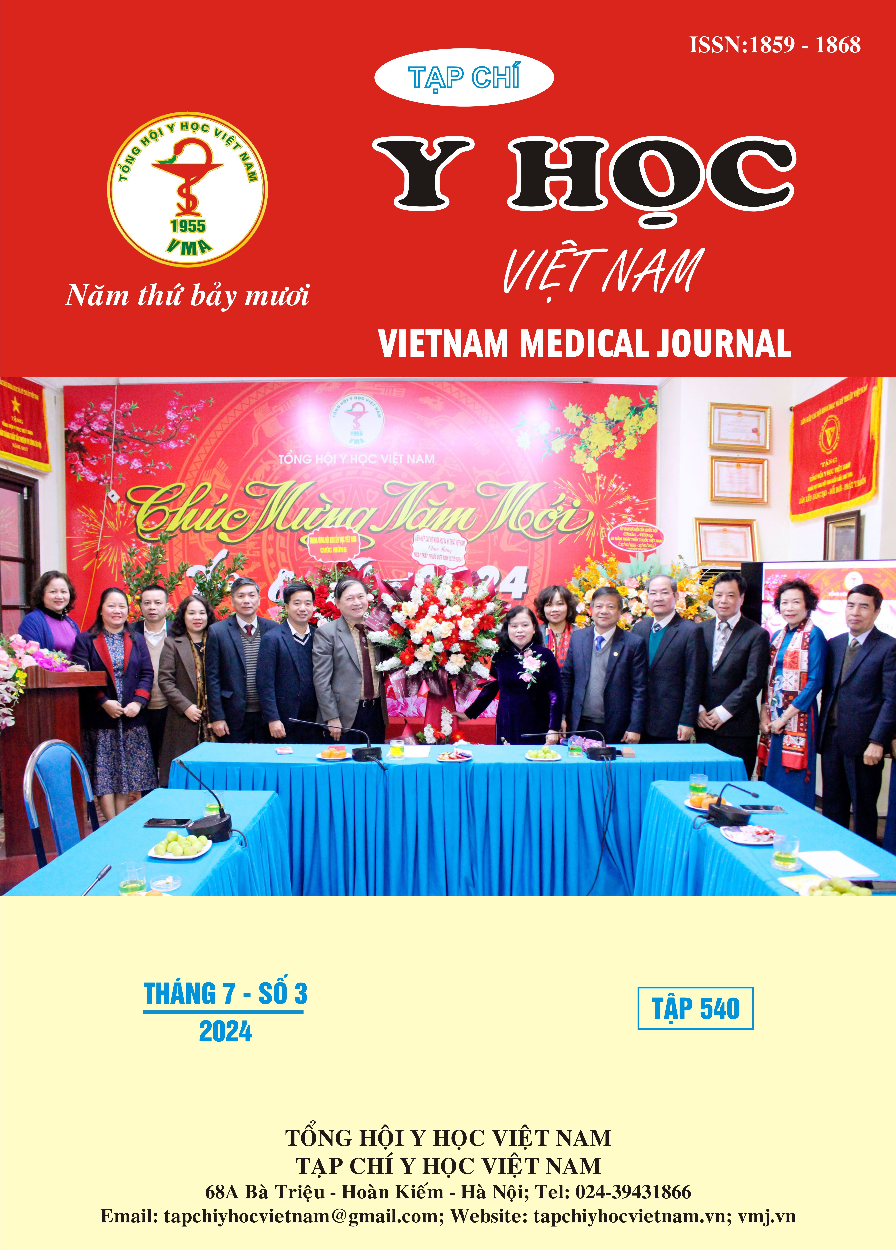THE RELATIONSHIP BETWEEN NASAL INDICES AND MORPHOLOGICAL CHARACTERISTICS OF THE NASAL-FACIAL REGION IN VIETNAMESE PEOPLE OVER 18 YEARS OLD
Main Article Content
Abstract
Background: The nose is one of the aesthetic units of the face, decisive for the aesthetics of the entire face. Objective: To determine the average measurements of nasal indices and their relationship with the morphological characteristics of the nasal-facial region. Methods: A cross-sectional study was conducted on students studying at Pham Ngoc Thach University of Medicine from May 2020 to January 2021. Nasal anthropometric measurements were taken indirectly through digital images using Image J software at Ho Chi Minh City University of Technology and Education. Results: Among 182 participating students, 55.5% were female, with ages ranging from 20 to 26 years, and an average age of 22 years. Most students had an anteriorly inclined profile, accounting for 97.8%. Regarding nasal bridge types, there were no cases of a broken nose; the highest proportion was students with a convex nose at 53.3%, followed by a straight nose at 42.3%. The Baum ratio was 1.72 ± 0.33, and the Goode ratio was 0.51 ± 0.07. Compared to the nasal tip projection, the nasal bridge length is 2.35 times greater and the nasal root height is 0.48 times. The Baum and Goode ratios showed statistically significant differences among different facial types. The ratio of nasal bridge height to nasal tip projection and the Crumley 1 and Crumley 2 ratios showed statistically significant differences among different nasal bridge types (p < 0.05). Conclusion: Nasal indices are closely related to the morphological characteristics of the nasal-facial region. In addition to measuring ideal nasal indices, rhinoplasty surgeons should consider the morphological characteristics of the patient's nasal-facial region to achieve the best aesthetic outcome.
Article Details
Keywords
Baum, Goode, Crumley 1, Crumley 2, facial type, nasal bridge type
References
2. Perović, Tatjana (2017). "The Influence of Class II Division 2 malocclusions on the harmony of the human face profile." Medical Science Monitor: International Medical Journal of Experimental and Clinical Research 23, 5589.
3. Võ Trương Như Ngọc, Nguyễn Thị Thu Phương, Trịnh Thị Thái Hà, cộng sự (2013). "Nhận xét hình thái mô mềm mũi ở nhóm sinh viên viện đào tạo răng hàm mặt tuổi từ 18-25 trên ảnh kỹ thuật số chuẩn hóa". Tạp chí Y học thực hành, 866(4), 21-24.
4. Trần Thị Xen (2018). "Một số đặc điểm hình thái gốc mũi của người Việt trưởng thành". Tạp chí Y học Việt Nam, 469(Số đặc biệt), 173-179.
5. Đinh Sỹ Mạnh (2017). "Nghiên cứu một số kích thước, chỉ số nhân trắc vùng đầu mặt và hình thái tháp mũi sinh viên Y tuổi từ 18-25 trên ảnh kỹ thuật số". Luận văn thạc sĩ y học. Trường Đại học Y Hà Nội.
6. Trần Tuấn Anh (2017). "Nghiên cứu một số đặc điểm hình thái, chỉ số đầu – mặt ở một nhóm người Việt độ tuổi từ 18-25 có khớp cắn bình thường và khuôn mặt hài hòa". Luận án tiến sĩ y học. Trường Đại học Y Hà Nội.
7. Ahmed O, Dhinsa A, Popenko N, et al (2014). "Population-based assessment of currently proposed ideals of nasal tip projection and rotation in young women". JAMA Facial Plast Surg, 16(5), 310-318.
8. McKinney P, Sweis I (2002). "A clinical definition of an ideal nasal radix". Plast Reconstr Surg, 109(4), 1416-1418.


